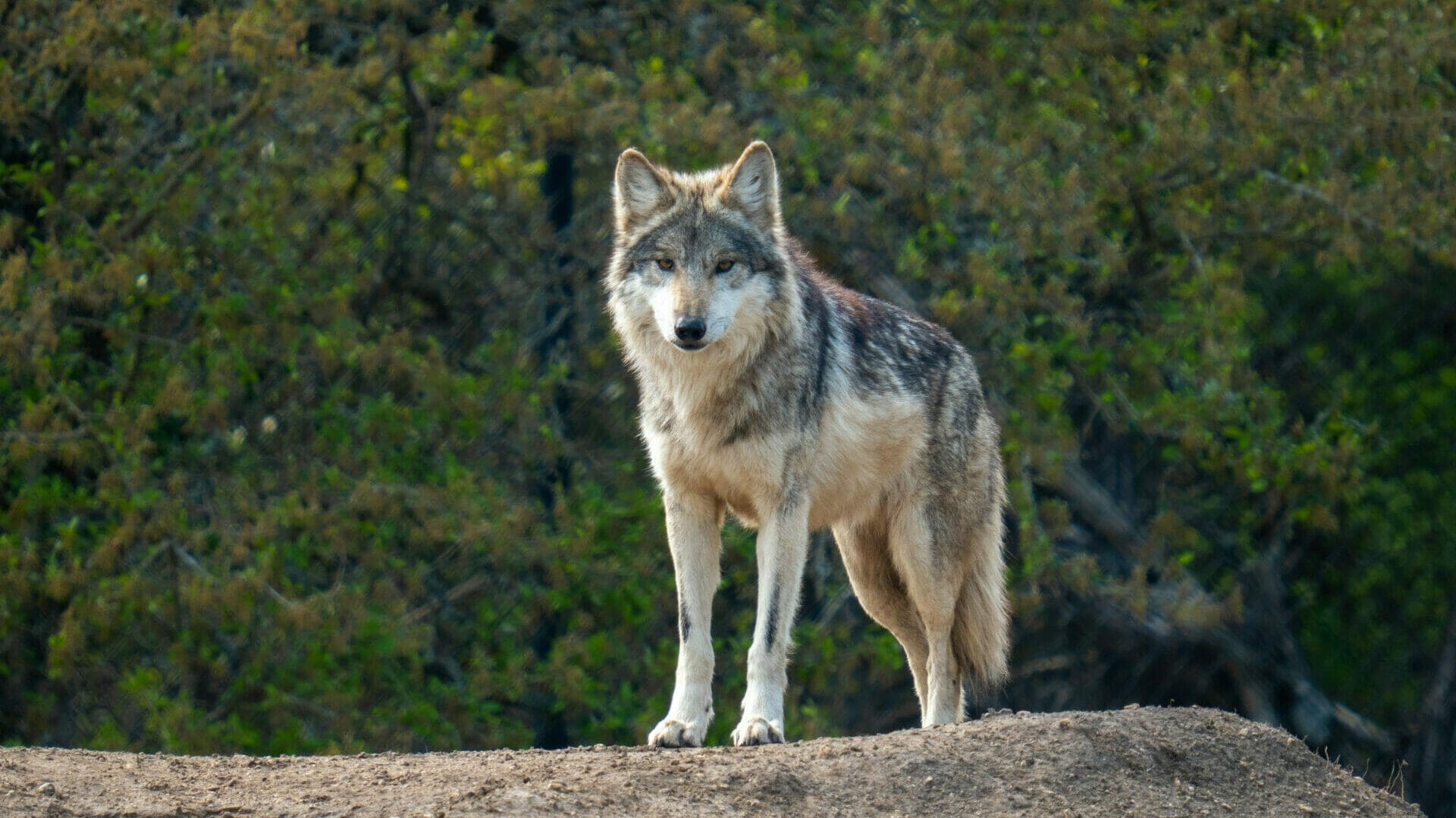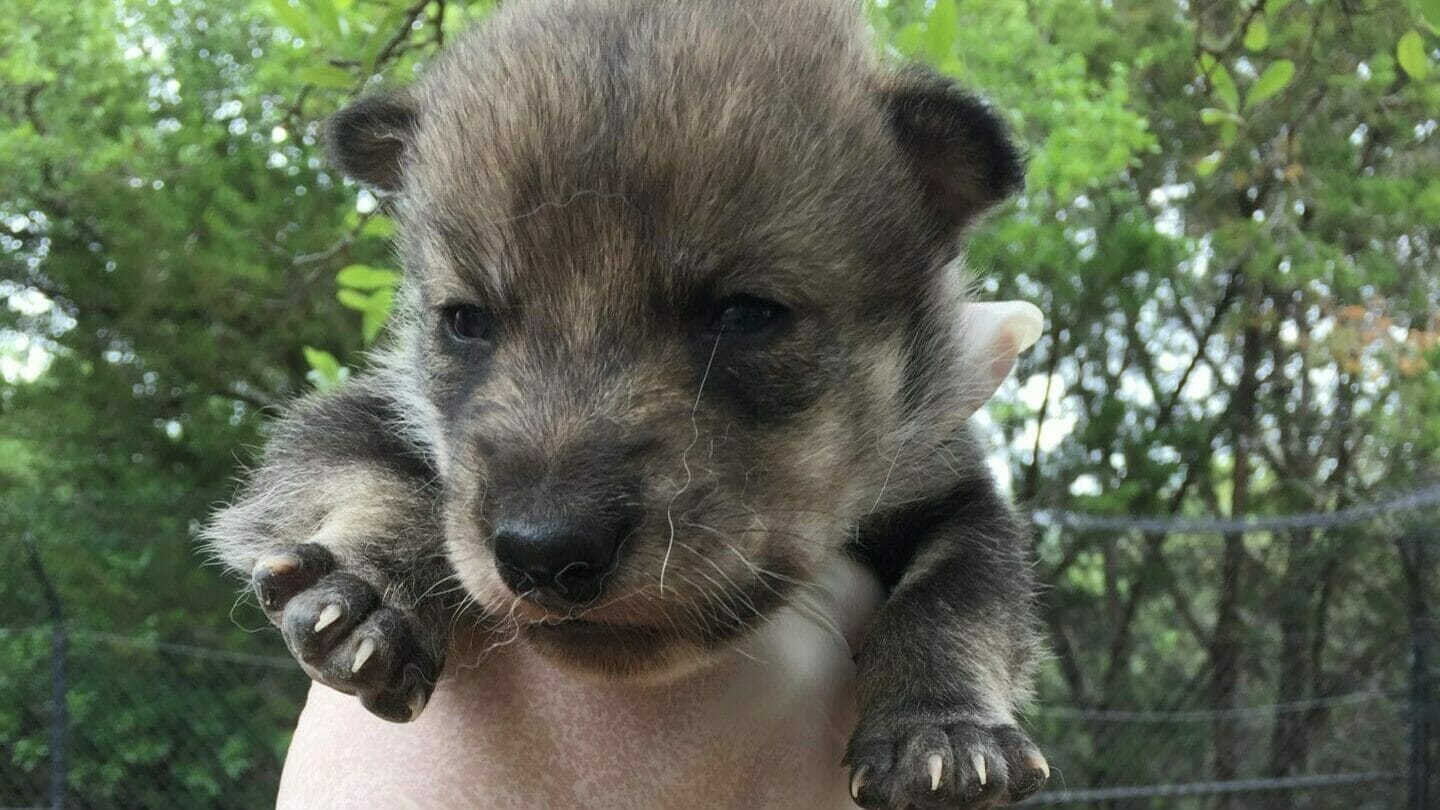In the field of conservation, the efforts facilities like ours make are often unseen, only becoming noticeable after years of focused work. Sometimes, however, we get to participate in truly historic projects, helping species on brink of eradication. In early 2023, one of these projects presented itself after Fossil Rim was chosen to provide a Mexican Gray wolf male for reintroduction into the wild. While we have participated in reintroductions in the past, the animals we provided were adding to well-established herds. In the case of this gray wolf, he would become one of only 45 wolves currently living in Mexico, and one of less than 700 in the world.
Where’d All The Wolves Go?
Since the 1970s, the U.S. Fish and Wildlife Service (USFWS), along with Mexico’s environmental ministry, have been working to restore Mexican Gray wolves to their historic habitat. For centuries, packs roamed throughout the southern United States and Mexico, keeping prey populations low and helping to maintain the landscape. As human development continued, however, they became a threat to the booming livestock trade. In addition to losing their habitat, wolves were trapped, poisoned and shot. The loss of this top predator caused a prey boom in the Southwest, changing the landscape and disrupting the natural balance of ecosystems. Reintroducing them is not only part of a mission to rebuild the species for its own sake, but to restore native land in parts of Texas, New Mexico, Arizona and more.
An International Process
 The process of picking our wolf, Lorenzo, to represent his species was a task decades in the making. Each facility raising or holding Mexican Gray Wolves does so under the watchful eye of the USFWS. Although we were responsible for the general husbandry of Lorenzo, it was always with the hope that he would one day get to play a larger role in the conservation of his species.
The process of picking our wolf, Lorenzo, to represent his species was a task decades in the making. Each facility raising or holding Mexican Gray Wolves does so under the watchful eye of the USFWS. Although we were responsible for the general husbandry of Lorenzo, it was always with the hope that he would one day get to play a larger role in the conservation of his species.
There is no small effort involved in identifying a wolf that matches all of the criteria required for a release, not to mention the details of where, when and who they will be released with. Every year, the USFWS hosts a Species Survival Plan meeting where information is gathered and shared between facilities. This meeting is where breeding pairs are selected, and where individuals are chosen based on several factors to be released.
As our carnivore curator Amanda puts it, “Part of it is genetics, part is behavior and temperament, and part is the facility they come from.”
The Ideal Wolf
The ideal wolf is skittish, and not prone to approaching humans out of curiosity or defensiveness. This desire to avoid people can be reinforced at a facility like Fossil Rim, where there is ample space away from groups, no city noises and plenty of natural enrichment. Lorenzo’s older brother Miguel was also in the running, but his domineering personality left more room for error. Once chosen, Lorenzo was paired with a female wolf living in Mexico, which meant months of paperwork and preparation to move him.

Initially the plan was to move Lorenzo to a holding facility in Mexico during breeding season so that he could bond and hopefully mate with his new partner before they were released. Unfortunately, some delays meant that the team was a few months behind schedule. While not a big problem in the grand scheme of things, it did mean that the pair would need to wait another season before they could be released properly. Before this, however, we needed to get Lorenzo to Mexico.
The Journey Begins
Crating him within his enclosure was step one, followed by a drive to a small airport in Cleburne, Texas. The team boarded a private plane with the wolf and traveled to Laredo, a town close to the Mexican border. The next day they met with the USFWS officials along with officials from Mexico who were able to approve Lorenzo’s paperwork and take him to his pre-release facility over the border.

Once released, Lorenzo and his mate will have tracking collars that teams will use to monitor their movements and provide yearly health checks. Tracking the pair also provides possible opportunities for cross-fostering. If the pair end up having a successful litter of pups, they also provide an opportunity for cross-fostering. This is a conservation technique where captive-born pups are placed with a litter born to wild parents. Not only does this increase genetic diversity within the wild population, but wolves raised in the wild have a higher survival rate than captive-raised wolves who are released during adulthood.
Each successful release like Lorenzo’s has a significant impact on the current and future population of Mexican Gray wolves. We’re proud to play a role in the conservation of their species and will continue to do our part to grow the number of wolves living free in North America. Keep a close eye out for news on Lorenzo’s progress and the progress of Mexican Gray wolves across North America.

